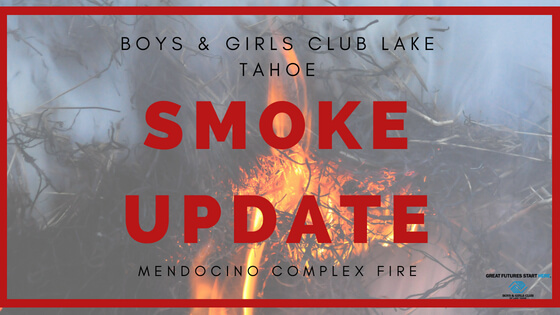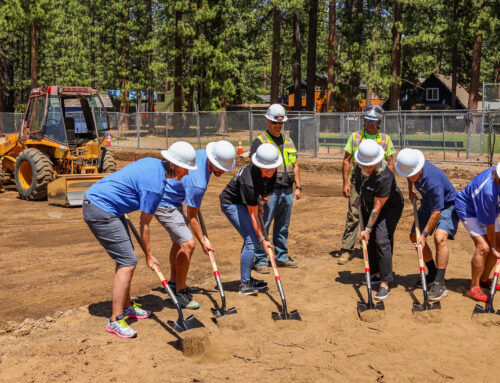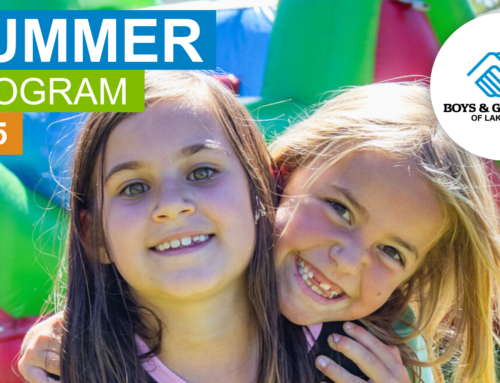I have always liked the song ‘Smoke gets in your eyes’ but recently it has been going around my head for the wrong reason – I’ve literally had smoke in my eyes! No-one living in or visiting Tahoe that summer can have missed the impact on our air quality from all the fires across the State. The Mendocino Complex is now the biggest fire in California history and recent reports indicate that it could take until September to get it under control.
Compared with Alpine County and the Carson Valley, Tahoe has got off lightly, mostly staying in the orange on the Air Quality Index, which means unhealthy for sensitive groups. But one of those groups is children.
Children are particularly sensitive to poor air quality as their bodies are still developing and when they are outside they are often engaged in vigorous activities such as running and playing. Some of the affects of smoke in the air are itchy or runny eyes and nose, a sore or scratchy throat, headaches, coughing, trouble breathing and feeling nauseous.
We have seen all these symptoms at the Club in recent weeks, and when the smoke has been particularly thick we have limited outdoor activities and reduced participation in vigorous activities.
Precautions you can take at home include: closing windows (especially when the smoke is thicker) and using fans to circulate cooler air, staying well hydrated (helps with sore throat and headaches), and seeking medical advice if breathing difficulties are prolonged. It is also advised to avoid travel to the Carson Valley right now – especially in the mornings when the air quality is worse.
The EPA has a good website https://www.airnow.gov/ which shows up to date air quality indicators for the entire country and a forecast. It also has a learning center page where kids can read about air quality and how it impacts them. There are also fun activities to do associated with air quality – might be a great way to keep your child amused indoors when the smoke worsens.
Here at the Club we will keep monitoring the air quality, adjusting our activities accordingly and keeping our thoughts with the families, communities and fire fighters affected by the wildfires.






